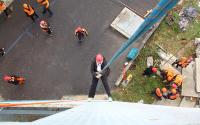5 December 2006Colin Brown
The Defence White Paper says upgrading the Trident submarine fleet at a cost of £15bn to £20bn is "cheaper" than other options for maintaining Britain's nuclear weapon system.
However, senior defence sources at the MoD confirmed that the running costs of the replacement for the Trident system would add more than £1.5bn a year - up to 5 per cent of the defence budget - raising the total cost to more than £65bn over 30 years.
The White Paper says that Britain needs to upgrade its Trident nuclear weapon system as a deterrent against the threat of an attack by state-sponsored terrorists. The Government is proposing to cut the total arsenal of warheads on Trident submarines from up to 200 to fewer than 160 - a cut of 20 per cent - to answer critics who say Britain is making it harder to stop the spread of weapons of mass destruction.
SUBMARINES
The White Paper proposes the replacement of the Trident submarine fleet with new nuclear-powered submarines to run from about 2025 to 2055. The shipyards at Barrow will be bidding for the jobs to stay in this country. The decision on the number of submarines will be taken after detailed design work begins around 2014. There are currently four submarines but they could be cut to three if innovations enable Britain to maintain a round-the-clock patrol.
THE MISSILE
Britain is to join an American programme to extend the life of the US-designed D5 rockets from 2025 to around 2040, when a successor may be needed. Assurances that the missiles will be compatible with the British submarines will be contained in letters to be exchanged shortly between Tony Blair and President George Bush.
THE WARHEAD
The number of warheads will be reduced. But a decision on whether to upgrade or continue with the existing warheads will be delayed until the next parliament beyond 2009. The White Paper says some warheads should continue to have "a lower yield" to make them "a more credible deterrent against smaller nuclear threats". Defence sources said this did not mean a return to battlefield nuclear weapons. Development of the warhead at the Atomic Weapons Establishment at Aldermaston will not require a return to nuclear testing. The tests can be run in laboratory conditions.
OPTIONS REJECTED BY MoD
* 20 large converted civil aircraft such as the Airbus A350 each carrying four cruise missiles plus 20 refuelling aircraft giving a range of more than 20,000km: Too vulnerable and too expensive. Cruise missiles also too slow.
* Three large surface ships, adapted to fire Trident missiles: "Serious drawbacks, primarily relating to vulnerability and security."
* Land-based silo system, similar to the US system in Wyoming, which covers an area the size of the Midlands: "Entirely impractical in the UK".
PRESSING THE BUTTON
"We would only consider using nuclear weapons in self-defence (including the defence of our Nato allies), and even then only in extreme circumstances," says the White Paper. But it leaves open the possibility of using nuclear weapons in retaliation for other weapons of mass destruction, such as chemical or biological weapons.
DISARMAMENT
"The conditions for complete UK nuclear disarmament do not yet exist."
http://news.independent.co.uk/uk/politics/article2040164.ece






